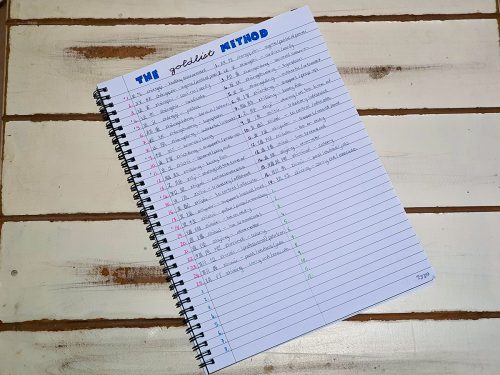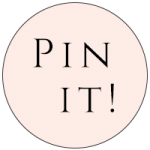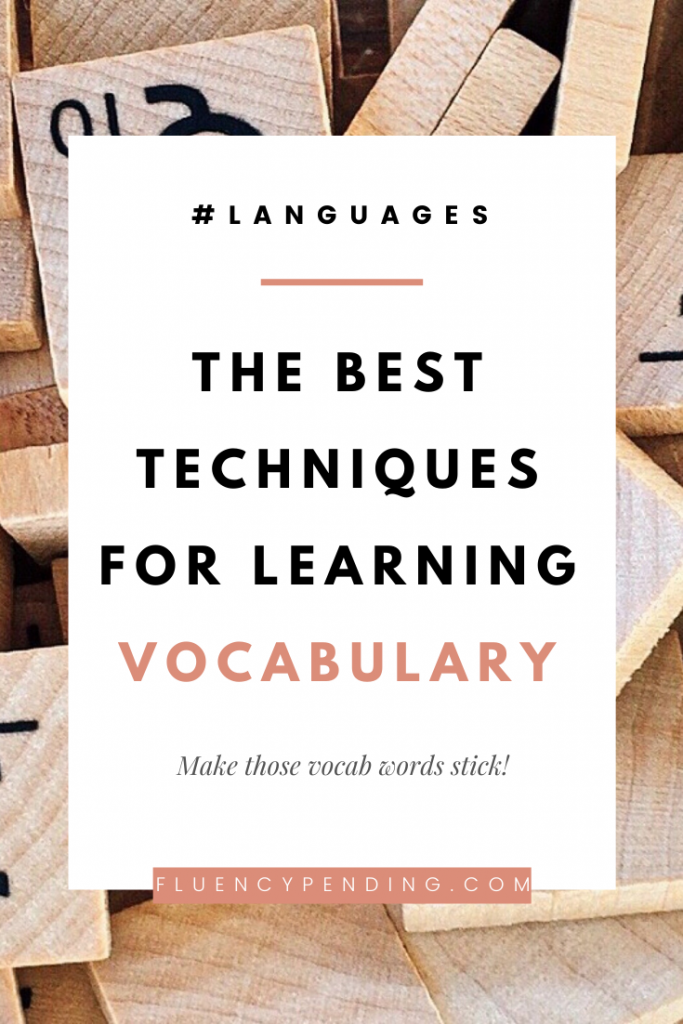
The Best Techniques for Learning Vocabulary
Please keep in mind that some of the links in this post are affiliate links. In the event of a sale, I will be awarded a small commission (at no extra cost for you). Thank you for supporting my blog!
Hands up, who loves drilling vocabulary?
*crickets*
I know, right? I sometimes wish there was some way of uploading all the words directly into my brain like in The Matrix.
While there’s no silver bullet for learning new vocabulary, there are many ways to make the process easier and faster.
Let’s take a look at some of the best techniques for learning vocabulary out there.
The Goldlist Method
Developed by David James, the Goldlist Method is a method used to commit vocabulary words to long-term memory through list writing.
The appeal of this approach is that it is quite relaxed. You are not actively trying to cram vocabulary, but rather focusing on enjoying the process of writing out the words.
The Goldlist Method works through a process of distillation. Here’s a quick run-down of how it works:
- Start with a notebook of at least 34 lines
- Draw a vertical line down the middle of your page
- In the left-hand column, write out the numbers 1-25
- Now write out 25 words/phrases in your target language with the translation in your native language
- Read your list out loud
This is your headlist and should take about 20 minutes to complete. Take a 10-minute break and start a new headlist if you still want to keep going.
You will leave your 25-word headlist for at least 2 weeks (but no longer than 2 months) before going back to it. The theory behind this is that you can negate the short term memory effect after 2 weeks.
After this waiting period, you can start your second distillation:
- In the second column, write out the numbers 1-17 – use a different colour ink for this
- Read the words from your headlist to see which ones you have the most trouble recalling
- Write out the 17 words you had the most trouble with
- Read your list out loud
This distillation process is repeated again after 2 weeks, this time with the 12 most difficult words.
After another 2 weeks, you will narrow your list down to 8 troublesome words. This is your final list and you can carry these words over into a new goldlist or include them in your flashcard deck for review.
The Goldlist Method is not for everyone. For every person raving about the efficacy of this method, I’ve seen two claiming that it doesn’t work. The only way to know if this is the right method for you is to try it out for yourself.

LCWC (Look, Cover, Write, Check)
This is a technique often used to teach children spelling, but you can use a variation of this method to learn vocabulary words.
- Draw a vertical line down the middle of your page
- In the left-hand column, write the word in your native language. Then write the word in your target language in the right-hand column.
- Read through your list and try to memorise the words.
- Fold the page in half so that the right-hand column is covered and write down the target language words by memory (you’ll now be writing on the back of the page).
- Check your recall and repeat if needed.
Mnemonics
I have been using mnemonics for years to remember all kinds of useful (and not so useful) information.
A mnemonic is a memory technique that helps you remember a piece of information by connecting it to something more accessible or meaningful. A mnemonic can be an acronym, a rhyme, a song or an associated image or word.
You may, for instance, remember that the Great Fire of London took place in 1666 because of the rhyme ‘In 1666 London burned like sticks’.
Mnemonic devices are particularly handy when memorising vocabulary. The more ridiculous or shocking your associations, the better.
For example, I remember the Mandarin word for ‘club’ (as in an organisation) – jùlèbù – by imagining a bunch of people dancing in a nightclub to the ABBA song Voulez-Vous. The three syllable chorus ‘voulez-vous’ is replaced by ‘jùlèbù’.
It’s weird, and I have no idea why my brain came up with it, but it works.
Word Analysis
Analyzing word parts, such as word roots, prefixes and suffixes, can help you gain a deeper understanding of the word you are trying to learn and make it easier to remember.
This approach also makes it easier to recognise and learn new words, since you can begin to make educated guesses about their meanings based on their parts. For example, if you already know that the suffix ‘tri’ means ‘three’, it becomes easier to decipher the meanings of words such as ‘tricycle’, ‘trimester’ and ‘triathlon’.
For Japanese and Chinese, learning the most common radicals can give you a good foundation for mastering Kanji and Hanzi.
The Chunking Method
The chunking method proposes learning vocabulary through set phrases, collocations and other lexical chunks rather than isolated words. For example, learning the set phrase ‘Hello, how are you?’ instead of the individual words.
Chunking helps you to learn words in context, making them easier to remember. This approach also arms you with lots of useful phrases so you can start engaging in conversations sooner.
Word Clusters/Mind Mapping
A word map is a great way to expand your vocabulary and make connections between known words and new, related words.
Simply write your focus word in the center of a piece of paper and begin to connect related words and phrases, such as:
- Words with the same root
- Words related to a certain topic or theme
- Synonyms
You can be as creative as you want – add pictures, mnemonics and different colours.
Word Games
Many language learning apps are based on the principle of gamification. And it’s not difficult to see why – when we learn in a fun way we are more likely to be engaged and motivated.
Word games such as crosswords, word searches, word matching, vocabulary bingo and Scrabble can make learning vocabulary feel like less of a chore.
Diglot Weaving
The diglot weave technique involves incorporating foreign words into sentences in your mother tongue. For example:
Let me tell you un cuento about a princess who lived in a beautiful palace.
One approach is to insert the word you want to remember into various sentences in your native language until you start feeling familiar with it. Another is to systematically replace words in a familiar sentence or story with L2 words until you are able to reproduce it entirely in your target language.
You may find that this kind of code switching starts to occur naturally as you become more familiar with your second language.
Incidental Vocabulary Learning
In the above examples I have focused on intentional vocabulary techniques, but there are also many ways to acquire new words incidentally. By this I mean that you do not actively cram or try to learn words, but pick them up organically through activities such as reading, speaking, watching television and listening.
What techniques do you use to learn new vocabulary in your target language?






6 Comments
Laura
November 19, 2019 at 2:08 pm
I’m going to have to try that first method. I’ve never heard of it before, but I really want to learn French. Hopefully itll work for me! ?
Elzette
November 19, 2019 at 3:11 pm
Thanks for stopping by, Laura. I hope the Goldlist works for your French. I’ve just started this method myself to work through the scary list of HSK 6 Mandarin vocab.
Virginia
November 19, 2019 at 7:50 pm
I tried learning languages before and many of these techniques are new to me. I hope one day I can try these techniques out for when I go back to picking up Italian or Spanish which I had started learning but stopped and feel like I’ve lost a lot of vocab. Thanks for these technique suggestions.
Elzette
November 19, 2019 at 8:24 pm
Thanks for reading, Virginia. I hope you find it useful when you get back to your Italian and Spanish studies.
Jenn
November 22, 2019 at 3:15 pm
Funny thing, I used to use the Goldlist method as my go-to method to study when I was at UNI. I did not know this was arecognized method but it always helped me immensely to remember new concepts. I will give a try to all the others to see if I can improve my Dutch learning skills. Thanks!
Elzette
November 22, 2019 at 3:35 pm
Yes, I think the distillation approach is quite an intuitive one. What I really like about it is that the emphasis isn’t on cramming words through rote memorisation, but rather on enjoyment of the process itself. Good luck with your Dutch!
Comments are closed